

EXPLORE BY TOPIC:
  Our top 10 resources
Our top 10 resources
  Childhood / Early Life
Childhood / Early Life
  Chronic Stress
Chronic Stress
  Education
Education
  Food Security
Food Security
  Genetics
Genetics
  Jobs & Work
Jobs & Work
  Housing / Neighborhoods
Housing / Neighborhoods
  Income & Wealth
Income & Wealth
  Race / Racism
Race / Racism
  Social Inclusion
Social Inclusion
  Policy & Change
Policy & Change





Buy the DVD
e-Newsletter
FAQs
Contact Us
Site Map
Home

|
 |


|
|
| |
|
Keyword=EP_7: 0 items found |
 Precarious Work Precarious Work 
CASE STUDY based on UNNATURAL CAUSES Extensive research has shown that high demand-low control jobs are a recipe for chronic stress. Globalization and changes in the labor market over the past 30 years have resulted in a dramatic transformation in the nature and conditions of work – complicating our picture of the sources and types of stressors that workers face, as well as subsequent health outcomes and remedies. |
 |
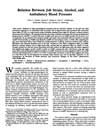 Relation Between Job Strain, Alcohol, and Ambulatory Blood Pressure Relation Between Job Strain, Alcohol, and Ambulatory Blood Pressure 
SCHOLARLY ARTICLE, Schnall, et al., 1992 This key study finds that job strain increases blood pressure in men not only at work, but at home and while sleeping. It also finds that regular use of alcohol further raises daytime blood pressure, but only among those in high-strain jobs. |
 |
rising Inequality, Declining Health: Health Outcomes and the Working Poor 
How healthy are people who are working but still can’t make ends meet? How does their health compare to those who are working and have good incomes? How do both of those health outcomes compare to those who are poor and not working? This report shows a widening gap between the health of people who are living in poverty and working and those whose work provides sufficient incomes. This suggests that worsening labour market conditions, a weakened social safety net and increasing income inequality are accompanied by rising inequities in health. |
 |
 San Francisco Paid Sick Leave Ordinance (pdf) San Francisco Paid Sick Leave Ordinance (pdf) 
PRESENTATION SLIDES, SF Office of Labor Standards Enforcement, January 11, 2007 Passed by a 61% majority vote, Proposition F required that all employers must provide paid sick leave to each employee who performs work in San Francisco, starting in 2007. This pdf of a slideshow explains some of the background and details of the ordinance, and provides statistics and details regarding its importance. |
 |
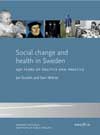 Social change and health in Sweden - 250 years of politics and practice Social change and health in Sweden - 250 years of politics and practice 
BOOK by Jan Sundin and Sam Willner, Swedish National Institute of Public Health, 2008 This thorough text examines the history of public health in Sweden, with particular attention to the emergence of the welfare state in the past century. Say the authors, "Historical lessons cannot be transferred uncritically from one country to another. However, differences and similarities in appropriate contexts can increase our understanding of relations between health and society. We hope that this book will be useful for policy comparisons and in the training of public health policy-makers, researchers, administrators and practitioners."
Full pdf available online, 5 MB. |
 |
 Strategic Actions for a Just Economy Strategic Actions for a Just Economy 
WEB SITE SAJE is an economic justice, community development, and popular education center that has been building economic power for working class people in Los Angeles since 1996. Over the past eleven years, SAJE's winning combination of community organizing, coalition-building, and grassroots policy has gained significant benefits for the community. Accomplishments include creating the nation's first welfare-to-work bank account and, through the Figueroa Corridor Coalition for Economic Justice, negotiating the nation's most comprehensive community benefits agreement. |
 |
 Take Back Your Time Take Back Your Time 
WEB SITE Take Back Your Time is a campaign to pass The Minimum Leave Protection, Family Bonding and Personal Well-Being Act of 2007. This amendment to the Fair Labor Standards Act would guarantee that anyone who's worked at a job for a year would get three weeks of vacation. On the site, you can download a handbook and other resources for mobilizing around this goal. |
 |
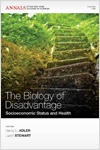 The Biology of Disadvantage: Socioeconomic Status and Health The Biology of Disadvantage: Socioeconomic Status and Health 
JOURNAL Nancy E. Adler and Judith Stewart, eds. Annals of the New York Academy of Science How does socioeconomic status get under the skin? This book summarizes the decade of research by the MacArthur Foundation Research Network on Socioeconomic Status and Health “exploring the pathways and mechanisms that contribute to the gradient relationship between socioeconomic status and health.”
PDFs of each article are available online. You may also purchase a complete copy of the journal.
|
 |
 The Political Economy of Health Promotion: Part 1 - National Commitments to Provision of the Prerequisites of Health The Political Economy of Health Promotion: Part 1 - National Commitments to Provision of the Prerequisites of Health 
ARTICLE by Dennis Raphael, Health Promotion International, Dec 2011
Part 1 of two-part article published in Dec 2011 issues of Health Promotion International. Part 1 of this article examines how health promotion rhetoric specifically concerned with provision of the prerequisites of health differs among nations identified as being either liberal, social democratic, conservative or Latin welfare states. |
 |
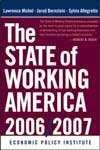 The State of Working America 2006/2007 The State of Working America 2006/2007 
REPORT by Mishel, Bernstein, and Allegretto, Cornell University Press and the Economic Policy Institute, 2007 Prepared biennially since 1988, EPI's flagship publication sums up the problems and challenges facing American working families, presenting a wide variety of data on family incomes, taxes, wages, unemployment, wealth, and poverty — data that enables the book's authors to closely examine the impact of the economy on the living standards of the American people. The State of Working America 2006/2007 is an exhaustive reference work that will be welcomed by anyone eager for a comprehensive portrait of the economic well-being of the nation. |
 |
 The Story of Stuff The Story of Stuff 
VIDEO and WEBSITE by Annie Leonard This entertaining and often surprising 20 minute video explains in easy language how "stuff" is produced, distributed, sold, and disposed of - and why the current system is in crisis. The Web site then offers tips for what you can do to help change the destructive chain, and inspiration for how to get involved in a wide variety of possible ways. |
 |
 The Work, Family, and Equity Index: How Does the United States Measure Up? The Work, Family, and Equity Index: How Does the United States Measure Up? 
REPORT by The Project on Global Working Families, 2007 The Work, Family, and Equity Index has been developed to measure governmental performance around the world in meeting the needs of working families in general and and low- and middle-income working families in particular. The policies used to comprise the index have achieved widespread recognition based on the weight of the research evidence or consensus in global policy and international agreements. |
 |
 Unemployment May Be Hazardous to Your Health Unemployment May Be Hazardous to Your Health 
NEWS ARTICLE by Roni Caryn Rabin, New York Times, May 8, 2009 Even as the U.S. Labor Department released figures showing that the economy lost more than half a million jobs in April, researchers made public a large study with an unsettling finding: Losing your job may make you sick.
|
 |
 United for a Fair Economy United for a Fair Economy 
WEB SITE A national, independent, nonpartisan, non-profit organization, UFE raises awareness that concentrated wealth and power undermine the economy, corrupt democracy, deepen the racial divide, and tear communities apart. We support and help build social movements for greater equality. |
 |
 Waking Up from the American Dream: Meritocracy and Equal Opportunity Are Fading Fast Waking Up from the American Dream: Meritocracy and Equal Opportunity Are Fading Fast 
EDITORIAL by Aaron Bernstein, Business Week Magazine, 2003 Dead-end jobs and the high cost of college could be choking off upward mobility... |
 |
 What's the Economy for, Anyway? What's the Economy for, Anyway? 
ESSAY by John de Graaf
De Graaf, filmmaker, author, and national coordinator of the Take Back Your Time campaign, questions the heavy focus in the U.S. during recent decades on increasing GDP at the expense of our health and overall quality of life.
|
 |
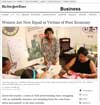 Women Are Now Equal Victims of Poor Economy Women Are Now Equal Victims of Poor Economy 
NEWS ARTICLE , New York Times, July 22, 2008 A Congressional study using government data indicates that the supposed "motherhood movement"—women leaving the workforce to focus on home-making—has actually been a largely involuntary withdrawal based on a stagnant economy and high unemployment. The percentage of men aged 25-54 who are employed has dropped from its peak at 96% in 1950 to 86% in 2008. Employment rates among women increased steadily from the women's movement until 2000, but have declined ever since. |
 |
 Work and its role in shaping the social gradient in health Work and its role in shaping the social gradient in health 
Jane E. Clougherty, Kerry Souza, and Mark R. Cullen Best evidence in 2009 suggests that occupation does affect health.Most recent research on the relationship has been directed at disentangling the pathways through which lower-status work leads to adverse health outcomes. This review focuses on six areas of recent progress: (1) the role of status in a hierarchical occupational system; (2) the roles of psychosocial job stressors; (3) effects of workplace physical and chemical hazard exposures; (4) evidence that work organization matters as a contextual factor; (5) implications for the gradient of new forms of nonstandard or “precarious” employment such as contract and shift work; and (6) emerging evidence that women may be impacted differently by adverse working conditions, and possibly more strongly, than men. |
 |
| « Prev 1 | 2 |
|




